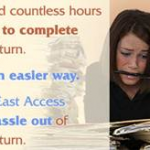2023 Tax Return Questionnaire
Please complete this form to assist us in completing your income tax return 2023 Tax Return Questionnaire (pdf) South East Access services is always of exceptional quality, focusing on: Business Development & Support Management Accounting Tax Return Preparation Stress-free reporting to the Australian Taxation Office read more
ATO has made Major changes to the way you can calculate Home Office expenses from 1 July 2022
 Eligibility to claim To claim working from home expenses, you must: be working from home to fulfil your employment duties, not just carrying out minimal tasks, such as occasionally checking emails or taking calls incur additional running expenses as a result of working from home have records that show you incur these expenses. To calculate your deduction for working from home expenses, you must use one of the methods set out below. Where you incur running expenses for both private and work purposes, you need to apportion your deduction. You can only claim the work-related portion as a deduction. Additional running expenses Running expenses relate to the use of facilities within your home. These expenses are generally considered private and domestic expenses. You can claim a deduction for additional running expenses you incur as a direct result of working from home. Additional running expenses may include: electricity or gas (energy expenses) for heating or cooling and lighting home and mobile internet or data expenses mobile and home phone expenses stationery and office supplies the decline in value of depreciating assets you use for work – for example office furniture such as chairs and desks equipment such as computers, laptops and software the […] read more
Eligibility to claim To claim working from home expenses, you must: be working from home to fulfil your employment duties, not just carrying out minimal tasks, such as occasionally checking emails or taking calls incur additional running expenses as a result of working from home have records that show you incur these expenses. To calculate your deduction for working from home expenses, you must use one of the methods set out below. Where you incur running expenses for both private and work purposes, you need to apportion your deduction. You can only claim the work-related portion as a deduction. Additional running expenses Running expenses relate to the use of facilities within your home. These expenses are generally considered private and domestic expenses. You can claim a deduction for additional running expenses you incur as a direct result of working from home. Additional running expenses may include: electricity or gas (energy expenses) for heating or cooling and lighting home and mobile internet or data expenses mobile and home phone expenses stationery and office supplies the decline in value of depreciating assets you use for work – for example office furniture such as chairs and desks equipment such as computers, laptops and software the […] read more The tax-free threshold for low-income earners
The tax-free threshold remains as $18,200, however, the low-income tax offset has been significantly reduced from 01.07.2022 to a possible $700 down from the possible $1500 in 2021/2022 If your taxable income is under the tax-free threshold, there are reasons why they may still need to lodge an income tax return. The most common reason would be that you have pay as you go (PAYG) tax and do require to complete complete a tax return to claim any monies. Income tax rates 2021/2022 ATO tax rates are www.ato.gov.au/rates/individual-income-tax-rates/ Contact the team at South East Access for more information on your personal income tax return. read more
2022 Tax Return Questionnaire
 Please complete this form to assist us in completing your income tax return 2022 Tax Return Questionnaire (pdf) 2022 Tax Return Questionnaire (doc) South East Access services is always of exceptional quality, focusing on: Business Development & Support Management Accounting Tax Return Preparation Stress-free reporting to the Australian Taxation Office read more
Please complete this form to assist us in completing your income tax return 2022 Tax Return Questionnaire (pdf) 2022 Tax Return Questionnaire (doc) South East Access services is always of exceptional quality, focusing on: Business Development & Support Management Accounting Tax Return Preparation Stress-free reporting to the Australian Taxation Office read more Federal Budget Special 2022
The Treasurer, Mr Josh Frydenberg, handed down the Federal Budget for 2022-23 on 29th March 2022. In an election year, the focus of Budget was inevitably on pleasing the electorate, with large amounts spent on lower and middle income earners, pensioners and welfare recipients and a 50% reduction in fuel duty all geared towards capturing the votes of “Middle Australia”. For individuals, the centrepiece was the increase in the low and middle income tax offset, which is welcome. People earning up to $126,000 will get a rebate of $420 in excess of what they would have got anyway through the existing tax offset. All you have to do to get it is lodge a tax return for 2021-22 – so funds should start to flow to taxpayers from 1 July 2022. Unfortunately, this is just a short term measure. Next year, the low and middle income tax offset disappears completely – meaning that people earning up to $126,000 will see a tax rise of up to $1,080. It’s hard to see how that will do anything to help cost of living pressures over the medium and long term. Worse, just as most Australians will experience this tax rise, the wealthiest […] read more
When is a contractor not a contractor?
 Mistaking an employee for a contractor can devastate any business, with fines of up to A$63,000 per breach. Contract work is definitely on the rise. A recent survey by PwC revealed that 46 per cent of global human resources (HR) professionals believe contractors or temporary workers will comprise at least 20% of their workforce by 2022. The sentiment is strongest in China, where half of the survey’s respondents believe traditional employment is being chipped away by an emerging preference among workers for greater freedoms, entrepreneurship and specialist skills. In Australia, 23% of employers say they now regularly engage contract or temporary staff – with another 44% employing them for special projects – according to the 2017 Hays Salary Guide. The Australian Bureau of Statistics estimates there are one million independent contractors currently working in Australia, representing about 9% of the workforce – an increase of 2% in the last six year. Why use a contractor? For a businesses looking to lower overheads and improve flexibility, contracting appears to be a perfect solution. In theory, employers can hire the resources they need, when they need them, without taking on the associated infrastructure and taxation overheads required for permanent employees. In Australia, […] read more
Mistaking an employee for a contractor can devastate any business, with fines of up to A$63,000 per breach. Contract work is definitely on the rise. A recent survey by PwC revealed that 46 per cent of global human resources (HR) professionals believe contractors or temporary workers will comprise at least 20% of their workforce by 2022. The sentiment is strongest in China, where half of the survey’s respondents believe traditional employment is being chipped away by an emerging preference among workers for greater freedoms, entrepreneurship and specialist skills. In Australia, 23% of employers say they now regularly engage contract or temporary staff – with another 44% employing them for special projects – according to the 2017 Hays Salary Guide. The Australian Bureau of Statistics estimates there are one million independent contractors currently working in Australia, representing about 9% of the workforce – an increase of 2% in the last six year. Why use a contractor? For a businesses looking to lower overheads and improve flexibility, contracting appears to be a perfect solution. In theory, employers can hire the resources they need, when they need them, without taking on the associated infrastructure and taxation overheads required for permanent employees. In Australia, […] read more Is it a business or a hobby
You would normally be considered to be in business for tax purposes if you enter into an activity with the intention of running it as a profit-making business, and if the activity is carried out in a way that shows it has a significant commercial purpose and viability. read more
Maintain personal and business security to stop fraud
There are many different types of scams – online, phone, mail and face-to-face. Online scams, such as email ‘phishing’ scams are on the rise and are designed to trick you into giving away your money, passwords and personal details such as Your tax file number – TFN Date of Birth Protect yourself and/or business from a potential scam by: deleting any suspected scam email hanging up on a suspected scam phone call not sending money or giving away your financial details to anyone you don’t know or trust Ensure that one avoids sharing passwords and login details change passwords and remove user access when a staff member leaves secure tax records when they aren’t in use avoid circulating tax file numbers in emails unless it’s absolutely necessary ensure your computers have up-to-date security software, including anti-virus, anti-spyware, anti-spam and firewall protection. Tax Refund fraud occurs where tax returns, activity statements and other documents are deliberately falsified in order to claim a tax refund a taxpayer is not entitled to. Fraudulent claims can be lodged by individuals on their own account or by third parties on behalf of others. Sometimes this involves identity crime, where taxpayer identities are used by third […] read more
Latest Tax Scam is hurting people
 Scammers target job seekers - Don’t get caught. Don’t reveal to anyone you do not know your personal details, including your date of birth and tax file number. read more
Scammers target job seekers - Don’t get caught. Don’t reveal to anyone you do not know your personal details, including your date of birth and tax file number. read more Beaware of tax return scams
 Tax Commissioner Michael D’Ascenzo has reminded the community and businesses to be aware and alert to scams claiming to be from the ATO. read more
Tax Commissioner Michael D’Ascenzo has reminded the community and businesses to be aware and alert to scams claiming to be from the ATO. read more 
